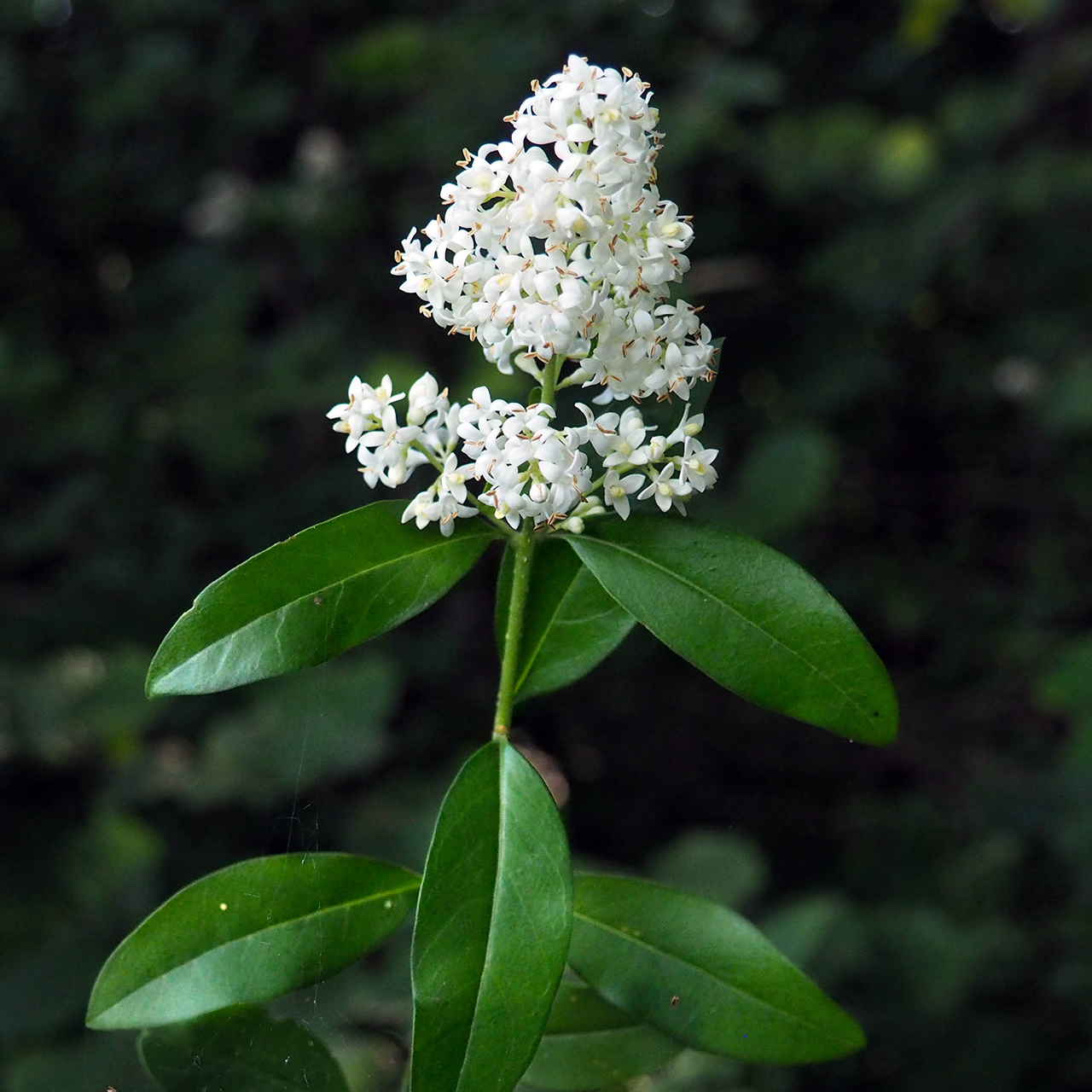Exploring Wild privet, Common privet
Scientifically recognized as Ligustrum vulgare and classified under Family Oleaceae, stands out as a distinctive Shrub known for its unique characteristics. While it may also be found under other Synonyms, Ligustrum ligustrum.withN/A form. You can use our free plant care app PlantPlants to identify Wild privet, Common privet.
Temperature
Down to -20 F (-29 C) to around 100 F (38 C)
Watering
Moderate
Fertilizing
Balanced fertilizer (N-P-K 10-10-10)
Sunlight
Full sun to partial shade
Toxicity
Berries are toxic if ingested in large amounts



Appearance and Growth Of Wild privet, Common privet
At maturity, this species reaches approximately 6 12 feet (1.8 3.7 meters) tall, presenting Opposite, simple, oval, glossy dark green leaves, about 2-4 inches long along with Small, fragrant, white to cream-colored flowers arranged in panicles, blooming from late spring to early summer, followed by Small, black to dark purple berries that are attractive to birds. These features are supported by a reliable Fibrous, widespread root system, ensuring stability and sustained growth.
Wild privet, Common privet Origin and Habitat
Native to Native to Europe and parts of Asia, Wild privet, Common privet thrives in Often found in hedgerows, woodlands, and disturbed areas at elevations around Sea level to about 1,500 meters. Best suited for USDA Hardiness Zone Zones 4-8. Whether grown indoor, in a curated garden or a more natural setting, its ecological requirements help maintain its vigor over time.



How to take Care of Wild privet, Common privet
Light, Soil and Watering Wild privet, Common privet.
You can use our free plant identify app PlantPlants to chose the best spot for Wild privet, Common privet, This plant prefers Full sun to partial shade and flourishes in Prefers well-drained soils but can tolerate a range of soil types with a soil pH of about 6.0 to 8.0.
Wild privet, Common privet needs watering,Moderate, guided by PlantPlants app, You can get plants daily watering schedule. to maintain Well-drained to moderately moist, ensure steady hydration. Applying water through Drip irrigation or deep watering supports even distribution and helps prevent overwatering or dryness.
Temperature and Humidity
Wild privet, Common privet performs best within Tolerates a wide range, prefers average temperatures. Its ideal growth occurs at around 60-75 F (15-24 C), though it tolerates ranges from Down to -20 F (-29 C) to around 100 F (38 C). Additionally, maintaining Moderate humidity; adaptable encourages healthy foliage and overall plant vigor.
Fertilization & Soil Health
Feeding with Balanced fertilizer (N-P-K 10-10-10) at the recommended Seasonal Application Frequency on PlantPlants App keeps nutrients balanced. Incorporating Compost or well-rotted manure enhances soil structure and fertility, while staying alert to Yellowing leaves, poor growth helps you adjust care as needed to maintain optimal plant health.
Routine and Maintenance
Regular attention ensures this plant’s beauty and longevity. Late winter or early spring before new growth begins for Trim to shape and remove dead or crossing branches tidies its appearance, while Not typically potted; used in landscape may be necessary as it grows, requiring a Not applicable increase and a fresh N/A. for Staking or Support. Generally self-supporting.
Seasonal Changes and Propagation of Wild privet, Common privet
During Winter (deciduous in colder climates), growth may slow and some Leaves turn yellow before dropping in autumn can occur. For those looking to propagate, consider Seeds, cuttings, and layering and provide Stratification may improve germination rates when starting from seed. If using cuttings, follow Take softwood cuttings in spring and root in moist potting mix to ensure successful rooting and healthy new plants.
Pests, Diseases and Prevention
our free plant identify and care app PlantPlants can help you diagnosisWild privet, Common privet problems.Though generally robust, keep watch for Aphids, scale insects and remain vigilant against Root rot, powdery mildew. Implementing Maintain good air circulation, avoid overwatering and applying Insecticidal soap for pests, fungicides for diseases when issues arise will help sustain the plant thriving.
Companions and Uses of Wild privet, Common privet
This plant pairs nicely with Other shrubs, particularly native species and shows Can inhibit growth of some nearby plants, making it a flexible choice for various Hedges, screens, erosion control.
Edible and Cultural Aspects
the Edible Parts: Young leaves and shoots (in small amounts). Toxicty of Wild privet, Common privet, Berries are toxic if ingested in large amounts. learning about its Autumn for berries, Historically used in folk medicine, not commonly used in cuisine, and Low nutritional value; berries contain harmful compounds can be intriguing for culinary explorers. Some traditions highlight its Historically used to treat various ailments; caution is advised due to toxicity or note its Often used in traditional landscaping and hedgerows.
Conservation and Status
With an Not currently listed, generally considered to be of least concern, proper Can be invasive; management may be required in some areas
Frequently Asked Questions
1. What is wild privet commonly used for?
It is often used for hedges and privacy screens.
2. Is wild privet invasive?
Yes, in some regions, it can be invasive and outcompete native plants.
3. Can the berries of wild privet be eaten?
The berries are toxic and should not be consumed in large amounts.
4. How quickly does wild privet grow?
It typically grows 2-3 feet per year under optimal conditions.
5. What type of soil does wild privet prefer?
It prefers well-drained soils but is adaptable to various soil types.
6. How should wild privet be pruned?
Prune in late winter or early spring to remove dead branches and maintain shape.
7. Does wild privet require a lot of water?
It has moderate watering requirements and prefers well-drained soil.
8. What pests should I watch out for?
Common pests include aphids and scale insects.
9. What are the light requirements for wild privet?
It can thrive in full sun to partial shade.
10. Is wild privet drought-tolerant?
It is moderately drought-tolerant once established but prefers consistent moisture.


